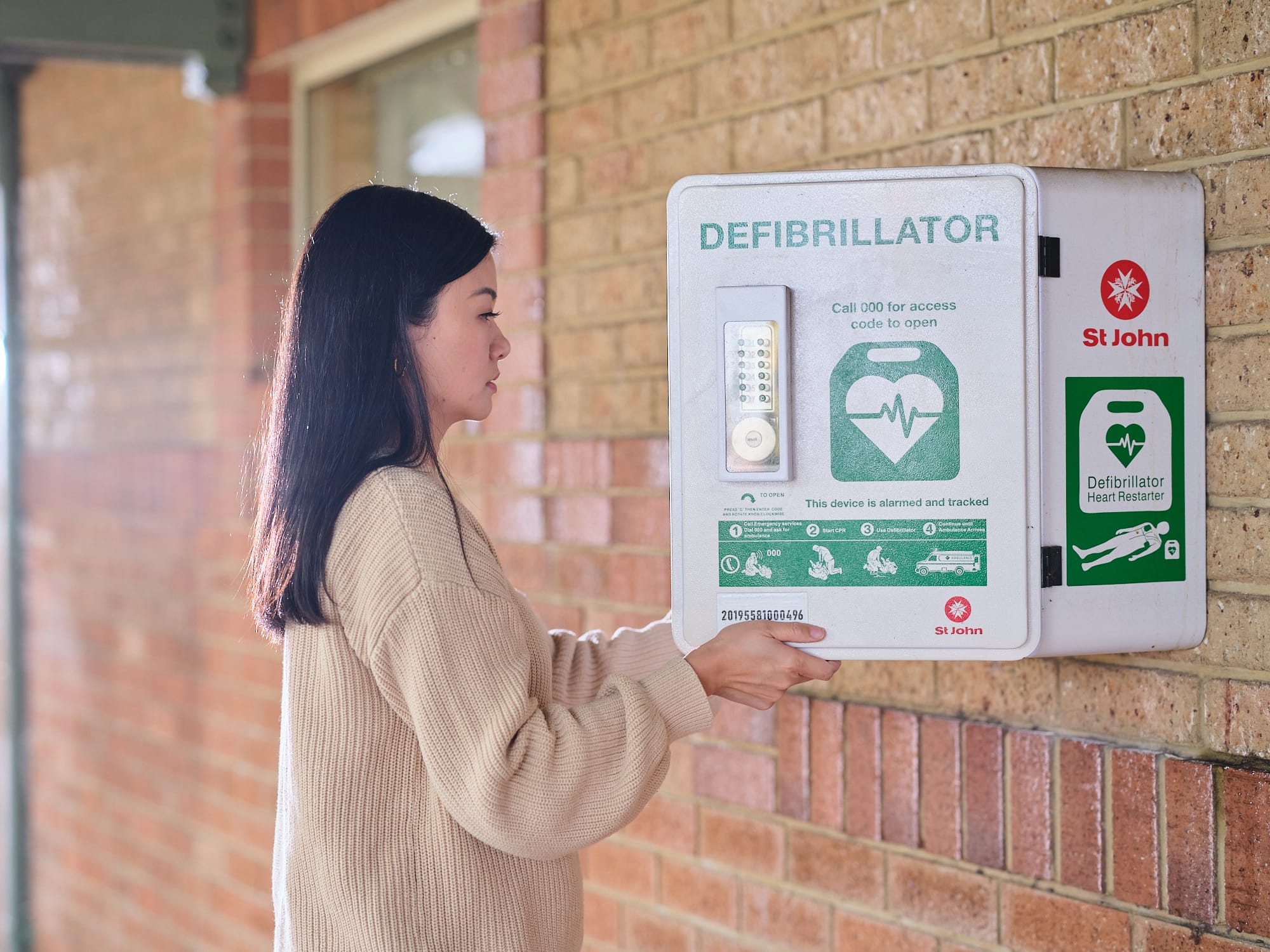WA bystander CPR rates in Local Government Areas lead the nation
- New research confirms St John WA Out-of-hospital Cardiac Arrest (OHCA) reports that Western Australians are attempting resuscitation of OHCA patients at a higher rate than any other Australian jurisdiction,
- Sixty high-risk LGAs were identified nationally as having a combination of both high OHCA incidence and low rates of bystander CPR. These were predominantly in regional and remote NSW, with none in WA.
- Based on a comparison of LGAs within WA, 11 LGAs were identified as high risk – nine were regional and two were metropolitan.
Western Australia has the highest bystander CPR rates nationally, as well as the lowest OHCA incidence, according to latest research by the Australasian Resuscitation Outcomes Consortium (Aus-ROC).
The Aus-ROC research paper mapped OHCA cases in adults aged 20 and over where an ambulance attended across 543 Local Government Areas (LGAs) nationwide between January 2017 to December 2019.
The paper focused specifically on OHCA cases with medical causation (i.e. excluding OHCA caused by physical trauma and other external causes).
A total of 62,579 OHCA cases were recorded, with 60 LGAs falling in the high-risk quadrant – defined as those having an incidence rate higher than the national 75th percentile and a bystander CPR rate less than the national 25th percentile.
These were predominantly in New South Wales regional and remote LGAs.
None were in WA.

For each individual state and territory, high-risk LGAs were identified as those with incidence greater than the state or territory’s 75th percentile and bystander CPR rate less than the state or territory’s 25th percentile.
In WA, OHCA incidence ranged from 76 to 140 cases per 100,000 people and was highest in the southern and south-western parts of the state, but bystander CPR rates were also highest in the south-western part of the state.
Based on comparisons made within WA, 11 LGAs were identified as high-risk, scattered from the central west to south-west of the state two of which were in the metropolitan LGAs of Bayswater and Victoria Park.
Perth’s best performing areas for high bystander CPR and low incidence rates (Fig. 10) were:
- Wanneroo
- Serpentine-Jarrahdale
- Melville
- Cockburn
Regionally, best performers were:
- Busselton
- Augusta-Margaret River

The paper confirmed what five years of St John WA’s reporting on OHCA has shown – that Western Australians attempting resuscitation of OHCA patients is higher than any other Australian jurisdiction.
Western Australians attempting CPR increased for a fifth year to 81.4 per cent of cases, according to SJWA’s latest OHCA Report.
Aus-ROC study authors suggest CPR training could be an important factor, with previous research in Victoria showing LGAs with higher rates of bystander CPR had higher rates of CPR training.
“Thanks to decades of consistently pushing the message that everyone from kindergarten-age to adulthood should get some form of CPR training – even taking 15 minutes to do a free online tutorial such as First Aid For Me – we’ve proven Anyone Can Save a Life,” St John WA Group CEO Kevin Brown said.
The study authors agreed school-based training enhanced adolescents’ knowledge, skills and confidence in providing CPR and pupils trained in CPR could serve as CPR multipliers by passing the acquired skills and knowledge onto family members and friends.
“In-person, grass-roots CPR education, such as St John WA’s First Aid Focus program, has demonstrated it has helped save lives and builds community capacity to respond to OHCA, and may explain WA’s strong CPR rates across LGAs,” Chief Preventative Office Megs O’Donnell said.
SJWA also has one of the largest Community First Responder networks in the country, having registered 10,000 defibrillators.
SJWA’s Community First Responder Network (CFRN) is a free service which aims to get defibrillators to cardiac arrest victims in the vital minutes before an ambulance arrives.
But more can be done to grow the number of 24/7 publicly accessible defibrillators in WA communities, which only make up about a third of registered defibrillators on the CFRN, SJWA Resuscitation Improvement Specialist Jason Belcher said.
“We know that what happens in the first few minutes of a cardiac arrest makes the biggest difference to the outcome, so it’s heartening to see the strong performance in bystander CPR in Western Australia,“ Mr Belcher said.
“It’s vital we continue to make an early call to Triple Zero (000), start CPR, and, where possible, use a community defibrillator if somebody collapses and isn’t breathing normally.”
Locations of the registered defibrillators are listed here and on the St John First Responder app.
To download the First Responder App visit: https://stjohnwa.com.au/online-resources/st-john-first-responder-app
ENDS
For media enquiries, call (08) 9334 1237. This number will divert to the on-call advisor. If you have a complex query, or cannot get through on the media line, email media.relations@stjohnwa.com.au.
